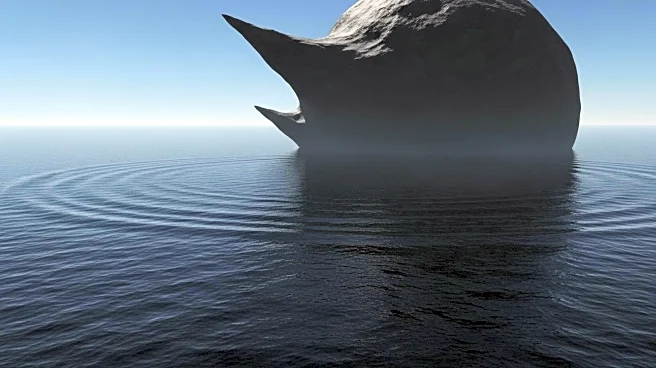What is the story about?
What's Happening?
Researchers have confirmed that the Silverpit crater, located 80 miles off the coast of Yorkshire beneath the North Sea, was formed by an asteroid impact approximately 43 million years ago. The crater, which is 700 meters below the seabed, was likely created by an asteroid or comet the size of York Minster. This impact caused a 100-meter-high tsunami, affecting early mammals in the area. The crater was discovered in 2002 by petroleum geoscientists and has been the subject of debate regarding its origin. Recent seismic imaging and analysis led by Uisdean Nicholson from Heriot-Watt University have provided strong evidence supporting the asteroid impact theory.
Why It's Important?
The confirmation of the Silverpit crater as an impact site is significant for understanding Earth's geological history and the role of asteroid impacts in shaping the planet. With only 33 impact craters identified beneath the ocean, Silverpit offers a rare opportunity to study such events. This research can help scientists predict potential consequences of future asteroid collisions and contribute to the broader understanding of planetary evolution. The findings highlight the importance of preserving geological evidence to learn from past events and prepare for possible future impacts.
What's Next?
The research team plans to use the findings to further explore how asteroid impacts have influenced Earth's history. This could involve studying other potential impact sites and refining models to predict the effects of future collisions. The study may also prompt discussions among geologists and researchers about the methodologies used to identify and confirm impact craters, potentially leading to new discoveries in the field.
Beyond the Headlines
The study of impact craters like Silverpit can offer insights into the long-term effects of asteroid collisions on Earth's climate and ecosystems. Understanding these impacts can inform strategies for planetary defense and risk mitigation. Additionally, the research underscores the importance of interdisciplinary collaboration in uncovering geological phenomena, combining expertise in sedimentology, seismic imaging, and numerical modeling.
AI Generated Content
Do you find this article useful?














